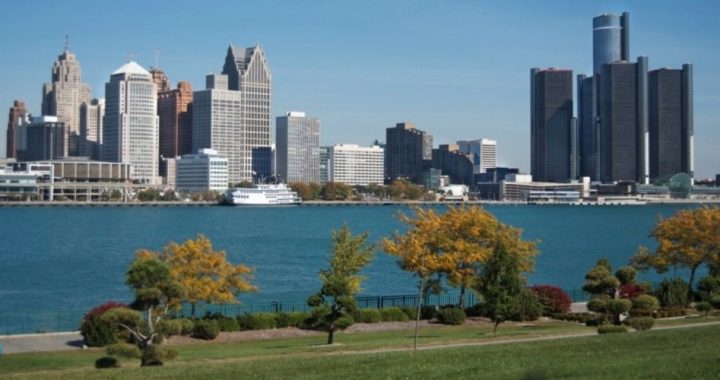
Once Kevyn Orr, Detroit’s emergency financial manager during the city’s bankruptcy, presented his “plan of adjustment” — code word for a compromise with which no one is going to be happy — criticism was most loudly proclaimed by two people who have no financial interest in the outcome: Amy Laskey, managing director at Fitch Ratings, and Matt Fabian at Municipal Market Advisors.
Under Orr’s plan, which was first presented in rough draft at the end of January, the $18 billion of unpayable debt will be written off by pensioners losing half of their promised benefits and bondholders losing 80 percent of their money. In addition, the pensioners would get their half in cash while the bondholders would get a piece of paper that promises they will be paid some time later.
Laskey said last Monday,
Any action that suggests pensions’ claims … should be given priority [compared] to that of bondholders could establish a troubling precedent.
Fitch recognizes the delicate political situation surrounding the Detroit bankruptcy [but] as the state and the city continue down what could be a long road, actions and rhetoric that suggested bondholder rights are not an important consideration will continue to damage [the municipal bond market’s] perception of the state and its local governments.
In simple terms, if bondholders are stiffed in Detroit, that will greatly lessen their appetite for bonds backed by other cities in trouble. This will raise interest rates, hastening the demise of those already teetering on the far edge of bankruptcy.
Fabian called the plan a “cramdown” if it’s approved by U.S. Bankruptcy Judge Stephen Rhodes. And if it is, bond market representatives will “sue against this as unfair.”
Other parties at interest are the state of Michigan and the Detroit Institute of Arts (DIA). Michigan Governor Rick Snyder has offered $350 million of “state” money to help Detroit as long as these conditions are met: the art held by DIA isn’t auctioned off as part of the deal, the unions and retirees agree, the state legislature goes along with it, and those administering Detroit’s two pension plans are replaced with disinterested outsiders. Other parties to the grand bargain are private foundations, with the total bailout approaching a billion dollars.
Putting the pieces together in a manner to cause the least amount of pain is going to be tricky. One especially odious piece was the deal Orr discovered that was illegally cobbled together under the administration of Detroit Mayor Kwame Kilpatrick, who is now sitting behind bars for the next 28 years for extortion, bribery, and fraud. Back in 2005, Detroit desperately needed $1.4 billion to make back payments to its pension plans, but borrowing was out of the question. So a scheme was devised involving Bank of America (BofA), UBS (Union Bank of Switzerland), and an outfit called the Financial Guaranty Insurance Company, to offer certificates of participation — COPs — that was “a clever legal circumvention of the debt limit,” according to Laura Bartell, a bankruptcy professor at Wayne State University.
Curt Guyette of the Michigan chapter of the American Civil Liberties Union explained how the deal worked:
The solution arrived at by the administration of then-Mayor Kwame Kilpatrick was to sidestep the law by turning to something called certificates of participation, or COPs, which are similar to municipal bonds. But instead of borrowing the money directly, Kilpatrick and his crew — following the advice of investment bankers who would reap massive profits from the deal — set up two nonprofit “service corporations,” which in turn created trusts that would sell the COPs to investors.
Technically, it was these two nonprofits that were obligated to ensure repayment of the debt. The city then entered into a contract with the nonprofits — both of which were controlled entirely by city officials — agreeing to pay them for services rendered.
In other words, they were mere shells.
To insure the city against rising interest rates, Kilpatrick and his cronies cut a deal with Financial Guaranty involving “interest rate swaps.” In the Great Recession those swaps collapsed, leaving Detroit holding the bag on some $300 million.
Orr tried to cut a deal with BofA, UBS, and Financial Guaranty where the city would pay just $230 million instead. Judge Rhodes said no; it was too sweet a deal for the banks. Orr went back to the three miscreants and cut another deal: $165 million. Again Rhodes threw it out.
The reason? Rhodes thinks the city has a strong case against the three on several counts, including outright fraud and using casino income to fund the swaps. All told there are eight different charges Detroit and Orr could bring against them.
Guyette read the entire deposition of Orr in front of the judge and learned that Orr thought the city had a 50-50 chance of winning on each of those eight different charges. Wrote Guyette:
The potential upside to litigating instead of negotiating is huge. If the swap deals are judged to have been invalid from the beginning, instead of having to pay $165 million more, the city could possibly recoup the $300 million it’s shelled out so far. That’s a swing of $450 million in Detroit’s favor.
And even if the city only succeeded in having the swap debt classified as “unsecured” rather than “secured,” as the banks claim it is, then the banks, instead of being entitled to full repayment, would have to settle for dimes on the dollar, just like all the other unsecured creditors.
But Orr doesn’t want to sue; he wants to deal.
Guyette then switched from the court of law to the law of probabilities:
Each time you flip a coin, there’s an equal chance it will come up either heads or tails. But there are formulas that let you calculate the likely overall outcome once you start stringing those flips together. So, what are the odds that, out of eight consecutive flips, a coin would come up tails every time?
About 1 in 99.
Well, not exactly, but close enough to make the point. While the real odds are 1 in 256 that Detroit would lose its case against the banks, Orr doesn’t want to take even that chance. So he’s willing to deal. And now the case sits on the desk of Judge Rhodes for his decision within the next two weeks.
What’s likely to happen is that Bank of America, UBS, and Financial Guaranty will have to get in the same paupers’ line along with the other bondholders foolish enough to loan money to a deadbeat and pensioners believing promises made by Kilpatrick and others of his ilk that they would actually get all their money.
There’s a lot more to this drama to be played out. Most think Orr is doing the best he can in putting the pieces together while Judge Rhodes is walking a tightrope of neutrality in the case. One thing is clear: By the time it’s all sorted out, no one will be a winner. Everyone tainted by Detroit will lose. The pain is inevitable. It’s the natural consequence, as economist Fredric Bastiat was fond of saying, that’s unseen in every transaction where some seek special advantage over others. The bill is often delayed but ultimately will be paid.
It’s bill-paying time in Detroit.
Photo of Detroit skyline
A graduate of Cornell University and a former investment advisor, Bob is a regular contributor to The New American magazine and blogs frequently at www.LightFromTheRight.com, primarily on economics and politics.
Related articles:
China Cashes In on Bankrupt Detroit
Michigan Governor Snyder Declares Detroit a Fiscal Disaster
Could Detroit’s Bankruptcy Filing Be the First of Many?
Judge Declares Detroit Bankrupt; Gives OK to Cut Pensions, Burn Creditors
Detroit’s Bankruptcy Hastened by “13th Month” Checks Issued to Pensioners



